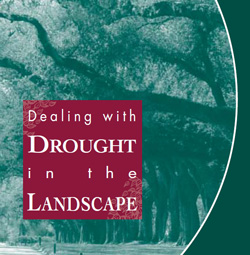
Fact Sheets And Publications
- Health & Well-being
-
Agricultural Programs
- Agribusiness
- Animal Science
- Beginning Farmer Program
- Commercial Crops
- Commericial Horticulture
- Delaware Soil Testing Program
- Disease Management
- Farm Vitality and Health Project
- Irrigation
- Nutrient Management
-
Insect Pest Management
- Insect Trapping Program
- IPM Hot Topics
- Commercial Field Crop Insect Management
- Commercial Field Crop Disease Management
- Commercial Fruit & Vegetable Crop Pest Management
- EIPM Implementation Projects
- Pollinators
- Research and Extension Demonstration Results
- Brown Marmorated Stink Bug (BMSB) Management, Research, and Resources
- Publications
- Pesticide Safety Education Program
- UD Plant Diagnostic Clinic
- Variety Trials
- Weed Science
- Certified Crop Advisor Program
- Poultry Biosecurity
- 4-H
-
Horticulture
- Climate Variability and Change
- Delaware Soil Testing Program
- Forestry
- Lawn and Garden
- Master Gardeners
- Master Naturalist Program
-
Nutrient Management
- Nutrient Management Certification
- Continuing Education for Nutrient Management
- Nutrient Management Planning Resources
- Commercial Nutrient Handler Resources
- Poultry Litter and Manure Management
- Turf Management
- Agriculture Notebook
- Horticulture Handbook
- Agriculture & Horticulture Handbooks
- Crop Production
- Soil Fertility
- Delaware Climate Change Coordination Initiative (DECCCI)
- Salt Impacted Agricultural Lands

Dealing with drought in the landscape
October 2024 | Written by: Dr. Susan Barton
 Research has shown that trees are important to the quality of residential streets and to the perceptions people have about their neighborhoods. People prefer landscapes with trees, especially large ones. Shrubs provide the framework for the garden, annuals and perennials provide colorful accents, and the lawn is the carpet that unifies the composition. All components are required to gain the economic and social benefits associated with an attractive landscape, which include increased property value (12 to 15 percent), increased occupancy for apartments and hotels, greater productivity in business establishments, improved social communities in housing complexes, and enhanced recovery in hospitals.
Research has shown that trees are important to the quality of residential streets and to the perceptions people have about their neighborhoods. People prefer landscapes with trees, especially large ones. Shrubs provide the framework for the garden, annuals and perennials provide colorful accents, and the lawn is the carpet that unifies the composition. All components are required to gain the economic and social benefits associated with an attractive landscape, which include increased property value (12 to 15 percent), increased occupancy for apartments and hotels, greater productivity in business establishments, improved social communities in housing complexes, and enhanced recovery in hospitals.
Landscape plants are important to our social well being. Landscape plants also play an important environmental role. Through photosynthesis, they use CO2 (carbon dioxide) and release O2 (oxygen). Plants provide shade and cool the environment by water evaporation from leaves. They also reduce wind speed and remove dust and pollutants from the air.
It is less expensive economically and environmentally to maintain landscape plants during a drought with minimal watering than to allow landscape plants to die and lose the benefits they provide. When landscape plants are replaced, they will require much more water to reestablish than would have been required to maintain them.
UD Cooperative Extension
This institution is an equal opportunity provider.
In accordance with Federal law and U.S. Department of Agriculture policy, Cooperative Extension is prohibited from discriminating on the basis of race, color, national origin, sex, age, or disability.
The University of Delaware is an Equal Opportunity Institution and Provider. Visit UD’s Office of Equity & Inclusion to learn more.
Additional Links
531 South College Avenue Newark, DE 19716 (302) 831-2501
